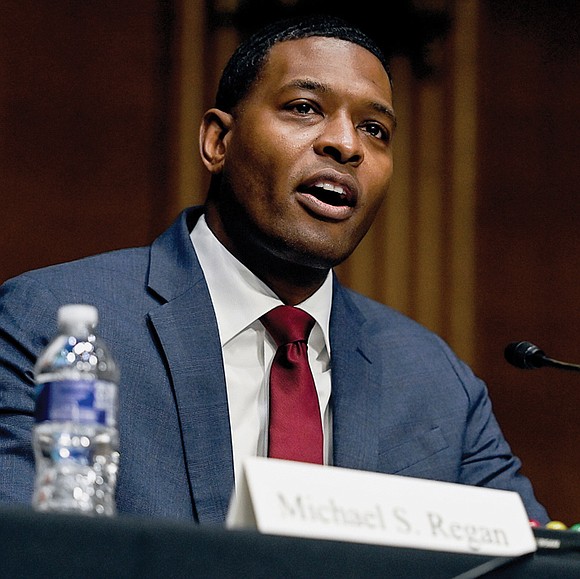Without federal, state dollars, city residents may pay higher sewer bills
Jeremy M. Lazarus | 2/3/2022, 6 p.m.
Richmond residents could potentially see their bill for sending wastewater to the city’s treatment plant skyrocket to $170 a month or more in the coming years, officials with the city’s Department of Public Utilities are warning.
The main reason: Richmond is facing a huge bill — currently pegged at $1.3 billion — to fix an old problem: Ending the discharge of raw sewage into the James River during heavy rains.
The bill includes $800 million in construction costs and $500 million in expenses for design, permits and other pre- and post-building costs, and with inflation that cost is likely to increase in the coming decade.
The city is currently facing a 2035 deadline to halt the discharge of about 2 billion gallons a year into the river of rainwater mixed with waste. Absent major federal and state help with no strings attached, Richmond residents would need to provide the money to cover that cost to enable the city to meet that deadline, if that remains unchanged.
That would mean huge increases in sewer bills, a big problem for many residents who already struggle to pay for gas, water and sewer service. A significant increase also would impact apartment rents. Currently, the wastewater section of a resident’s utility bill averages $65 a month, according to Robert Steidel, deputy chief administrative officer for operations, which includes DPU.
That bill would need to nearly triple to more than $170 a month to generate the cash DPU would need to fix the problem by the deadline, he said.
In a city where one in four residents live at or below the poverty line, “that’s just not affordable,” Mr. Steidel said.
Even if bills do not jump that much, the CSO problem means that that the bill for wastewater will continue to rise, straining residents’ wallets.
Like many cities with sewer systems that date back to the 19th century, Richmond once combined its rainwater and sewer systems, but the practice ended by the 1920s.
Still, nearly 30 percent of the city, primarily in North Side, the East End and Downtown, and a part of Henrico County that relies on the city’s plant, have what is called a combined sewer overflow or CSO system.
During big storms, each inch of rain can drop about 330 million gallons of water onto the 19-square mile area where the CSO system of piping remains in place. When 2 inches or more drop in an hour, that can require a river discharge to prevent the treatment plant from being overwhelmed.
The 1972 federal Clean Water Act has long required cities to end such discharges into their rivers, and Richmond has made major strides since the 1980s, according to DPU Director April Bingham.
Richmond already has invested $315 million since then into discharge prevention, Ms. Bingham said, including most recently expanding the treatment capacity of the sewer plant from 75 million gallons a day to 140 million gallons a day.
Overall, the city has cut its discharges by 90 percent and cut in half the number outlets discharging a rain-wastewater mix into the river, she noted.
Last week, Michael Regan, administrator of the U.S. Environmental Protection Agency, came to Richmond to tour one element of the city’s CSO program, the giant underground holding tank at 371 S. 14th St.
Accompanied by U.S. Sen. Tim Kaine and 4th District Congressman A. Donald McEachin, Mr. Regan went underground to view the 34-year-old system that can temporarily hold up to 50 million gallons of the rain-wastewater mix.
Mr. Regan also touted the historic $1.4 billion that has been set aside in the new infrastructure bill to help cities with CSO systems to separate rain and wastewater. That’s a record for federal investment in this area.
But with tens of billions projected as the cost for cities mostly on the East Coast to end waste discharges into waterways, it is just a tiny fraction of the need. Richmond, alone, could use it all, but is likely to secure only a small portion.
Mr. Steidel said the city would need 10 holding tanks the size of the one Mr. Regan toured and other infrastructure to handle the remaining 2 million gallons the city discharges yearly into the river from its CSO system.
The General Assembly is now considering whether to shrink the 2035 deadline it imposed on Richmond to totally end river discharges to 2030 to get the work done faster.
That’s in line with Gov. Glenn Youngkin’s promise to end river pollution from wastewater plants.
“That is just not feasible,” Ms. Bingham said, given the huge cost of dealing with the final 10 percent of Richmond’s discharges and the impact that would have on customers’ bills.
She said protecting the environment should not come at the expense of equity for residents.
That’s also the view of the James River Association, a river advocacy group that has pushed for ending discharges for more than 30 years.
Bill Street, the group’s chief executive, said that his group regards elimination of Richmond’s untreated sewage from the James as a top priority.
But a timetable that isn’t realistic or is overly expensive for utility customers is unlikely to make it happen. “We need a plan that works for all,” he said.
Richmond has previously gotten financial help from the state government. Before he left office, Gov. Ralph S. Northam beefed up support by proposing that the state provide $150 million to Richmond for CSO work, $50 million of which has already been approved.
But the city must match that money, Ms. Bingham said. The requirement to provide $150 million match will exhaust the city’s current borrowing capacity for CSO projects, she noted.






